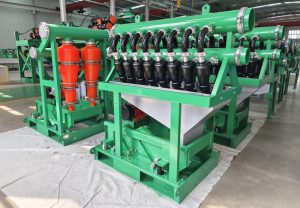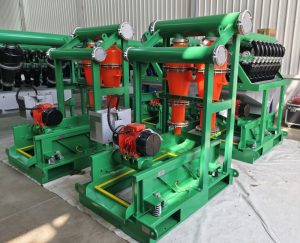In the realm of drilling operations and tunnel excavation projects, the utilization of sand and mud removers, or as they are more formally known, desanders and desilters, is an essential aspect of the solids control system. These devices are specifically designed to separate solid particles from drilling fluids, thereby ensuring the smooth execution of drilling operations, minimizing equipment wear, and enhancing overall efficiency.
1. GN Desanders,
Desanders, functioning as secondary solids control equipment, employ vortex technology to efficiently handle solid particles within the drilling fluid, with a particular focus on particles ranging from 40 to 150 micrometers in diameter. Their primary role is to maintain the cleanliness and stability of the drilling fluid, reducing the impact of solid particles on downhole equipment and lowering operational costs.
Desilters, on the other hand, are tertiary solids control components designed to target finer solid particles, typically those between 20 and 65 micrometers. Their objective is to further enhance the quality of the drilling fluid and prepare it for the subsequent stages of the solids control process.
GN is A Global Reach desnder and desiliter manufacturing factory.
In China, numerous companies, such GN solids control as prominent manufacturers and suppliers of desanders and desilters. Our products have made significant inroads in the domestic oil exploration and tunnel construction sectors. Internationally, especially in Africa and the Middle East, Chinese-made desanders and desilters have gained recognition, and with advancements in technology and strengthened international collaborations, Chinese manufacturers are poised to expand their market share.

Advancements and Innovations
1. Material Upgrades
To cope with harsher operating environments, desanders and desilters are being constructed with more durable and corrosion-resistant materials, enhancing their reliability and longevity.
2. Automation and Control
Modern desanders and desilters incorporate sophisticated automated control systems, enabling them to operate autonomously, streamlining maintenance and management tasks.
3.Smart Monitoring
Incorporating sensor technology and Internet of Things (IoT) systems, these devices can monitor their performance in real-time, transmitting data to the cloud for remote diagnostics and optimization.
